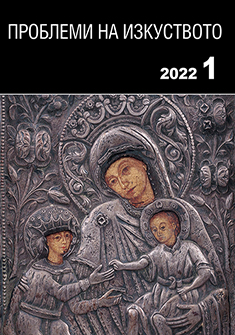Тревненската рисувана ерминия и някои от моделите на тревненските зографи
The Hermeneia of Drawings from Triavna and Some Models Used by the Painters from Triavna
Author(s): Elena GenovaSubject(s): Fine Arts / Performing Arts, Visual Arts, History of Art
Published by: Институт за изследване на изкуствата, Българска академия на науките
Keywords: drawing; iconography; models; engravings; icons; murals
Summary/Abstract: The Hermeneia of Drawings from Triavna contains 77 ff. Only a few details and contours of the pencil drawings are made in ink or light and shade effects. They were made probably by different painters, as two or three hands are identifiable. The manual contains separate drawings of saints and compositions along with entire cycles of lives, the Gospel and the Old Testaments with accompanying inscriptions. The Hermeneia has probably been compiled around the turn of the nineteenth century, the earliest marginal note in the manuscript dating from 1821, and probably belonged to the Vitanovs. This article studies and analyses the preparatory drawings and some of the models used by the painters from Triavna. The groups of full-length apostles for instance on several pages of the manual have been modelled on two apostles by Gregory Levitsky, a Kievan engraver of the first half of the eighteenth century. Several drawings leave a deep impression, because their subjects are a very rare occurrence in Bulgarian nineteenth-century church painting, such as the multi-figure composition of the Protecting Veil of the Most Holy Mother of God. This subject occurred in Bulgarian church painting in the late eighteenth century and was a particular priority of the painters from the Art School of Samokov. The painters from Triavna rendered it very rarely. Krustiu Zachariev painted the scene at the Church of St Michael the Archangel in Triavna, in 1842. The composition of the Holy Trinity with the Seven Archangels, very popular in the Western European painting, is unique. Flemish artist Hieronymus Wierix made an engraving on this subject in 1599. The archangels are depicted full-length in the foreground with their symbolic attributes. The composition in the Hermeneia from Triavna is vertical; still, the names of all the seven archangels and almost all their attributes are identical with those of the Flemish artist’s engraving. The drawing from Triavna is found on an icon at the National Archaeological Institute with Museum, neither signed nor dated, but apparently belonging to the nineteenth century. A drawing from the Hermeneia of Drawings from Triavna represents an allegorical composition, very rarely treated in the Orthodox painting, of Christ the Eucharist/An Allegory of the Eucharist. Christ is rendered fulllength, stepping on a high plinth, his hands raised. Blood flows from all his wounds into a big vessel in front of him looking like a baptismal font, or a holy water stoup. The last drawing catching our attention is of the Most Holy Mother of God stepping on a moon and her protoimages in the prophetic visions. This subject and the iconography are the epitome of the Catholic doctrine of the Immaculate Conception, as well as of some of the symbols of the litanies surrounding her image. The model used by the painter from Triavna occurs on an engraving of the Most Holy Mother of God and Child stepping on a moon surrounded by the symbols of her immaculacy, published in the 1753 Kievan Heirmologion. Two icons (from the National Archaeological Institute with Museum and the Monastery of Kilifarevo) were painted using the drawing. The Hermeneia of Drawings from Triavna is a highly interesting evidence of the stages in the work of the painters and of their approach to the preparatory drawings, developed with a lesser or greater degree of detail. It is also interesting for the gamut of the subjects included.
Journal: Проблеми на изкуството
- Issue Year: 2022
- Issue No: 1
- Page Range: 3-12
- Page Count: 10
- Language: Bulgarian
- Content File-PDF

